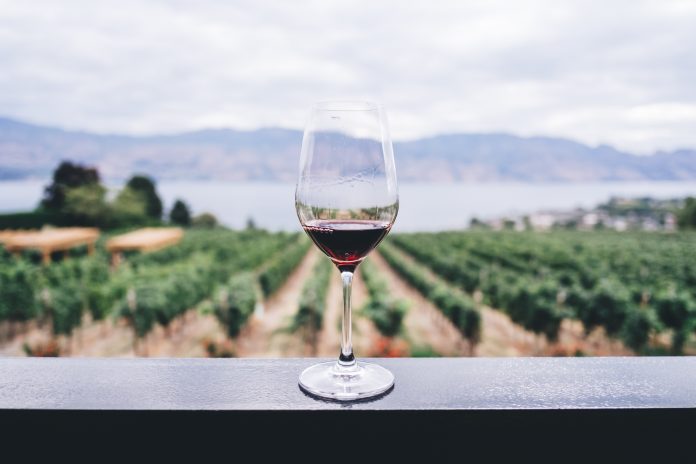The earliest records of the consumption of wine and the process of making it dates as far back as the Chinese dynasty somewhere around 7000 BCE. This alcoholic beverage made from wine grapes became popular all around the world with many different recipes and manufacturing processes innovated along the way.
Today, wine is a popular alcoholic beverage and wine lovers often travel around the world to taste the rarest and most beautifully balanced wine recipes. Wine grapes tend to have thicker skins, are smaller in size, much sweeter and contain seeds which set them apart from the grapes we consume as part of our diet.
Wine drinking culture became extensively popular with Roman expansion and today you can get a variety of different types of wines from age-old classics to modern twists that add a different taste and experience altogether.
The Wine Making Process
The winemaking process has evolved considerably in the past century with the introduction of what is commonly referred to as ‘brewers yeast’. Up until the early 1950s, wine manufacturers relied heavily on naturally-occurring yeasts that often produced inconsistent results and were more susceptible to spoilage.
The introduction of a pure strain of yeast called Mediterranean Saccharomyces cerevisiae changed all of this as this re-engineered yeast guaranteed consistent wine quality and minimized spoilage which allowed for the production of wine at a commercial scale.
Types of Wine & The Best Temperature To Consume Them
As recipes and processes have evolved so have the types of wine made available for consumption. Today, wine lovers can enjoy up to eight different styles of wine including:
Sparkling Wine
Made popular in France sparkling wine offers an exquisite taste and is arguably one of the most challenging and time-intensive wines to be manufactured in the world. Champagnes or sparkling wines are often purchased to celebrate memorable events and have gained immense popularity in the west in recent years.
Sparkling wines are best served at a temperature between 40-45 degrees Fahrenheit. More expensive, high-quality champagnes should be served at a slightly warmer temperature to get the best flavor and experience.
Light-Bodied White Wine
A popular wine consumed all around the world, light-bodied white wines go along with most foods. Wines like Sauvignon Blanc, Pinos Gris, and Gruner Veltliner are consumed at a global level by wine savory lovers for their aroma and distinct flavor.
Light-bodied white wines are best served between 45-50 degrees Fahrenheit. At these temperatures, the wine retains its crispiness and acidity offering the best tasting results.
Full-Bodied White Wine
Those that love red wine often love the taste and flavor of a full-bodied white wine as they have a much smoother taste and a touch of creaminess about them that is associated more with red wine. These wine are different than light-bodied wine largely because of their manufacturing process that involved the use of wine-making techniques like oak-aging.
Chardonnay is a popular full-bodied white wine that is best served at a temperature ranging from 48-56 degrees Fahrenheit. Heavier white wines, especially oak-aged, taste a whole lot better when served slightly warmer than other types of wines.
Aromatic White Wine
Aromatic white wines are perhaps the most distinctive of all wine types thanks to their rich almost explosive scent that offers a wine tasting experience like no other. These wine grapes are some of the most sought after grape strains in the world and a favorite for those who acquire the taste.
They are also surprisingly affordable and are best served at a cooler temperature ranging from 45-50 degrees Fahrenheit.
Rosé Wine
Rosé Wine is a favored type of wine for true winemaking purest as it involves a unique “dyeing” process that gives the wine its distinct rose color. This type of wine was introduced in Europe in the 1700s and has gained in popularity ever since.
Rosé Wines are best served at a temperature ranging from 45-50 degrees Fahrenheit which is slightly cooler than you would expect.
Light-Bodied Red Wine
This type of wine is perhaps the most coveted wine in the world and comes in a distinct pale color and contains very little tannin which makes them smooth to drink and doesn’t leave you feeling parched. Pinot Noir is perhaps the most famous light-bodied red wine.
Light-bodied red wines taste better at a slightly cooler temperature ranging from 48-56 degrees Fahrenheit.
Medium-Bodied Red Wine
This type of wine is ideal for those that love to have a glass of wine with their meals. Medium-bodied red wines offer an abundance of flavor and zest which makes them the ideal choice to complement most types of foods. Some of the most popular wines in this category are Grenache, Sangiovese, Merlot, Zinfandel, Montepulciano, and Cabernet Franc.
These wines are best served at a temperature right around 55 degrees Fahrenheit. This is ideal cellar temperature which makes this type of wine the most convenient and accessible wine bottle to pop open at dinner and enjoy with family and friends.
Full-Bodied Red Wine
An acquired taste for most full-bodied red wine is the most tannic and flavor-rich of all wine types. This is why this type of wine goes great with beef as it helps cleanse your pallet. Cabernet Sauvignon is perhaps the most popular full-bodied red wine enjoyed by many steak-eating enthusiasts.
Aged reds and full-bodied red wines are best served between 59-68 degrees Fahrenheit to allow for the best taste and experience.
How To Regulate Wine Temperature
The best way to ensure that you consume wine at the temperature it was designed to be consumed at you should consider investing in a wine cooler. These wine coolers can allow you to maintain the desired temperature of wine you want for the best possible experience every time you pour yourself a glass.
For information on the best wine coolers available on the market visit https://undergroundwinemerchants.com/reviews/vinotemp-wine-coolers/
Find a Home-Based Business to Start-Up >>> Hundreds of Business Listings.

















































